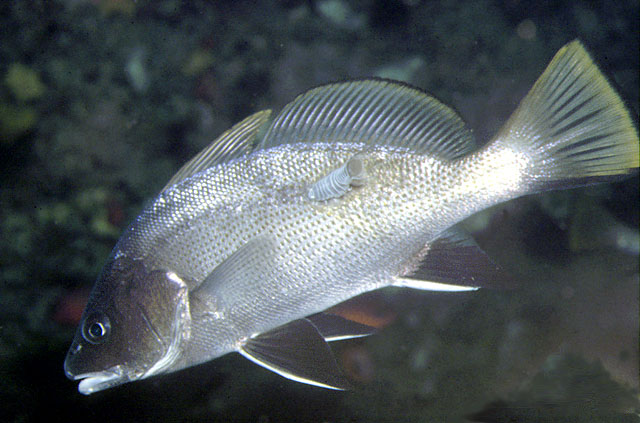| Sciaenidae (Drums or croakers) |
| 70 cm TL (male/unsexed); max. reported age: 21 years |
|
demersal; brackish; marine; depth range 1 - 200 m |
| Eastern Atlantic: Southern Bay of Biscay to Mauritania, occasionally southwards to Senegal. Also throughout the Mediterranean and Black seas. Records from Ghana (Ref. 6810) and Gabon (Ref. 5516) are questionable. Two records in Belgium were actually for Micropogonias undulatus (Linnaeus, 1766) (Ref. 117298). The record off Wimereux is a misinterpretation during data entry mistake from the the Müller (2004, Ref. YYY) (Bailly, pers. comm., March 2018). |
|
Dorsal spines (total): 11-11; Dorsal soft rays (total): 23-25; Anal spines: 2-2; Anal soft rays: 7-8 |
| Occurs in shallow coastal waters mainly on rocky and sandy bottoms, often entering estuaries and more active at night. Also inhabits caves and reefs (Ref. 9987). Feeds on small fishes and crustaceans (Ref. 4780). SCUBA diving observations suggest this to be a very calm fish with remarkable buoyancy control and an ability to move without much apparent effort (Ref. 9505). Marketed fresh and frozen; in Turkey, otoliths are ground to a powder and used as remedy for urinary tract infections (Ref. 9987). |
|
Near Threatened (NT); Date assessed: 03 March 2020 Ref. (130435)
|
| harmless |
Source and more info: www.fishbase.org. For personal, classroom, and other internal use only. Not for publication.

